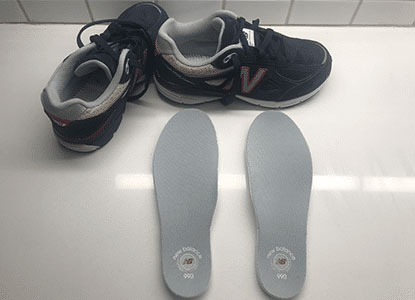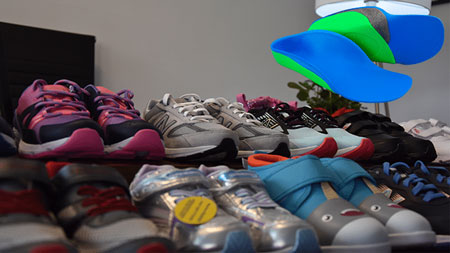Best Orthotics for Kids with Leg Pain – Improve Your Child’s Foot Posture and Walking Gait
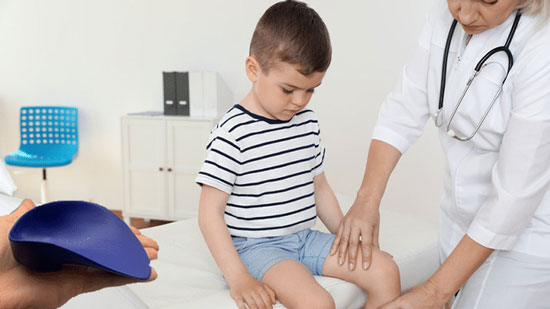
Do you have a child who has been complaining about leg pain lately? Is your child refusing to participate in sports? I have noticed that most children who suffer from leg pain are diagnosed with growing pains, but in some cases, that pain is associated with another condition such as flat feet or weak ankles. As a shoe fitter with years of experience, I can attest to the transformative power of the right pair of shoes and orthotics.
Children who have foot problems such as flat feet or weak ankles are more likely to experience leg pain, as their walking gait is affected by these conditions. Everything is connected, which is why having a foot condition can cause so many problems all over the body. If your child’s feet are causing leg pain, we can explore how orthotics can make a difference. By intervening early, we can correct minor issues before they develop into major problems.
Most Common Foot Condition in Children: Flat Feet
This condition can cause an imbalance and lead to leg pain. Since the entire human body is connected, one imbalance can easily affect another part of the body.
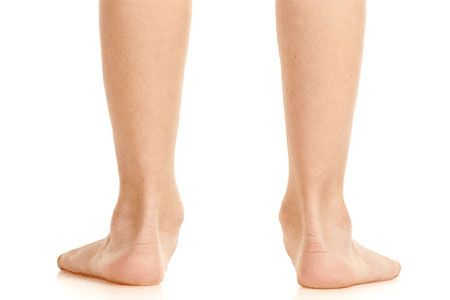
The Role of Orthotics
Orthotics are specially designed insoles that provide support to the feet. They can be particularly beneficial for children experiencing discomfort due to structural foot problems. By aligning the feet properly, orthotics can reduce stress on the legs and improve overall posture.
Supportive Orthotics: Before and After
The transformation in a child’s posture and gait with the correct orthotics can be remarkable. Before and after images often show a noticeable difference in alignment and comfort levels.


Another Common Foot Condition: Intoeing (Pigeon Toed)
Intoeing, or being pigeon-toed, is a condition where the toes point inward instead of straight ahead. It’s quite common in young children and usually corrects itself as they grow. However, in some cases, intoeing can cause leg pain and require intervention. Orthotics can play a crucial role in supporting and gradually correcting this condition.
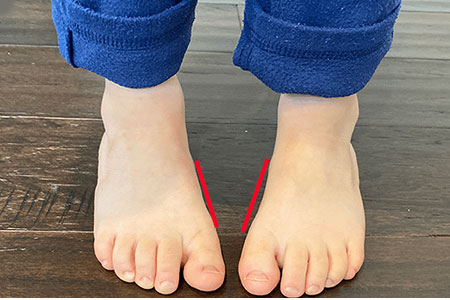
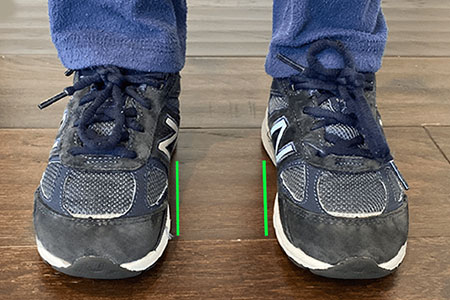
Something so simple as providing your child with the correct types of orthotics and shoes can make a world of difference helping improve your child’s foot posture and walking gait.
Key Features of the Orthotics I Recommend
1. Deep heel cups help maintain the correct foot position, which is essential for proper alignment. The orthotic I recommend provides a deep heel cup that helps control the alignment of the heel and lower leg:
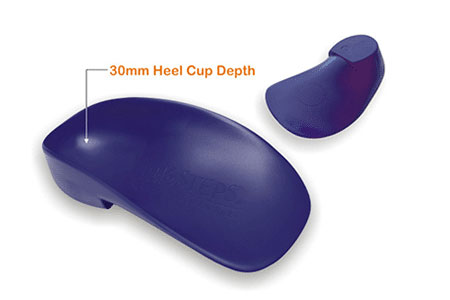
2. Medial and lateral flanges offer additional support and alignment for the foot. These flanges play a crucial role in controlling excessive foot motion, enhancing stability.
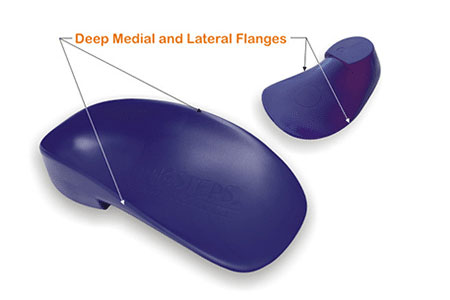
Over the years, I’ve had the privilege of working with countless families to find the perfect shoe and orthotic solutions. I have fitted all certain different types of orthotics from full to quarter length to AFOs and SMOs, and littleSTEPS orthotics have been the most effective ones in helping significantly reduce, or fully eliminate foot or leg pain.
Best Orthotics for Kids with Leg Pain: littleSTEPS Orthotics
littleSTEPS orthotics are the best orthotic insoles for kids with leg pain as they offer exceptional arch and heel support, all while being less intrusive than other options. This unique design helps support your child’s feet without hindering the natural development of their foot and leg muscles, allowing them to grow stronger and more aligned on their own.
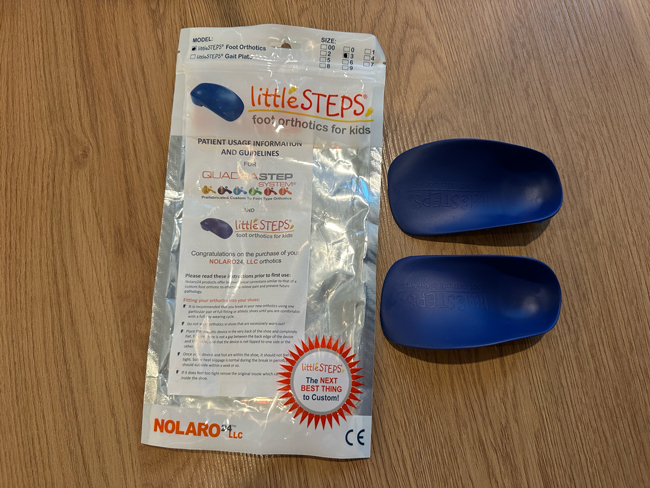
1. Order littleSTEPS® Orthotics from their official website. You must submit a Referral Code to complete your order: JVFCS100121
2. It’s not necessary to remove the original insoles of the shoes when fitting this orthotic.
3. The 3/4 length design makes it easier to fit into various shoe styles.
4. Take a look at this chart to figure out what size to order based on your child’s shoe size.
I also want to emphasize that orthotics don’t make your child’s muscles “lazy” or “weaker.” Instead, they provide essential structural support, allowing your child’s foot and leg muscles to develop naturally while offering the stability they need. Think of orthotics as a helpful tool, guiding their growth without interfering with muscle strength.
Many therapists get frustrated when children wear shoes that don’t fit properly, as that makes the condition harder to manage. The orthotics need to be fitted inside the correct types of shoes for the child to get the full benefits that the orthotics have to offer.
What Shoes are Best for Children Who Wear Orthotics?
As a bonus resource, I’ve put together a list of deep and supportive shoes for children who wear orthotics. These shoes are specially selected for their ability to provide the necessary support, stability, and comfort to work seamlessly with orthotics. From sturdy soles to extra depth and adjustable features, these shoes are designed to help your child get the most benefit from their orthotics while promoting healthy foot development
Has Your Child Been Diagnosed with “Growing Pains”?
Before assuming your child’s leg pain is just “growing pains,” it’s crucial to consult with your medical professional. In fact, did you know there’s no solid evidence linking “growing pains” to growth spurts? It’s always best to get a professional opinion to rule out any underlying issues. It’s important to note that growing pains are almost always felt in both legs. Pain that is only in one leg may be a sign of a more serious condition.
Final Thoughts on Children with Leg Pain
Growing pains may be a result of children running, jumping, and climbing while playing, but don’t assume that your child’s leg pain is due to growing pains.
Joint pains in children can sometimes be a sign of a more serious underlying condition. Take your child to your medical professional to make sure that your child is not dealing with a specific foot condition that is affecting the legs. If your child has a foot condition such as flat feet or weak ankles, I suggest being proactive, as all of the structures and joints above the feet depend on the feet.
While orthotics can be life-changing, it’s essential to remember that they are part of a broader approach to managing and alleviating leg pain. Consulting with a healthcare professional for a comprehensive assessment is always advisable. A multi-faceted approach ensures that all aspects of a child’s foot health are addressed, leading to more effective outcomes.

